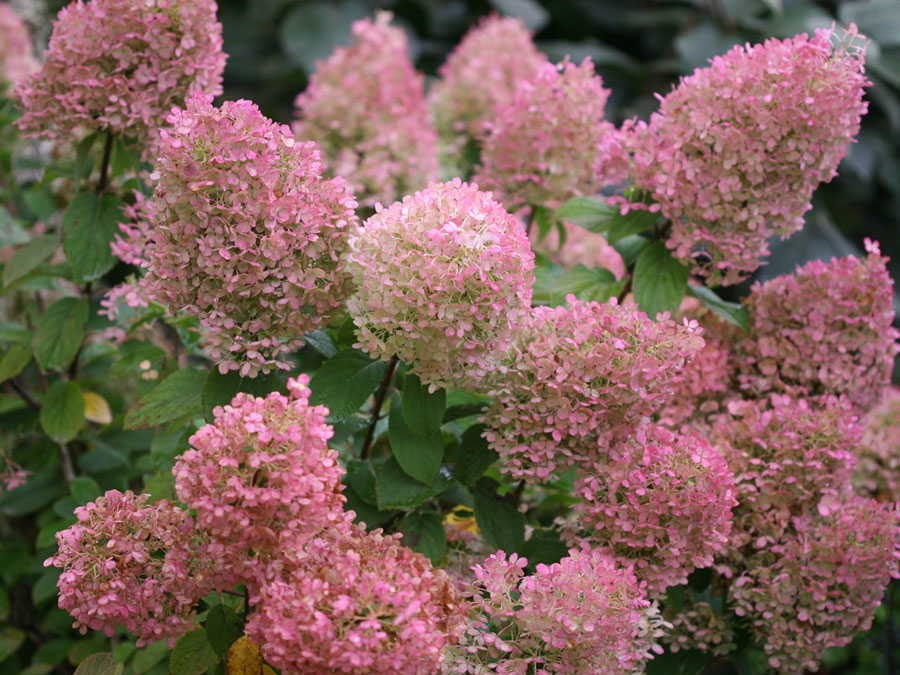By: Lisa Briggs | August 14th, 2019
As the days shorten, it’s time to look at what late summer has to offer our gardens. And our number, go-to shrub for a fabulous display is that summertime staple, the hydrangea. Luckily, there is a variety for every garden, whether your garden is full sun or full shade and your boat is floated by the big, blowsy mop-heads or the more delicate lace-caps.
The Hydrangea family consists of many marvelous flowering shrubs. They are versatile plants, with a species for any location. Prized for their billowy flower heads and mid to late summer bloom, hydrangea lend a sparkling note to the landscape. As a bonus, in early fall the flowers often age to softer hues, persisting into the winter and adding interest to our slumbering garden beds.
Smooth Hydrangea, H arborescens, is the easiest of the group. Since this species will bloom on new growth, it can be pruned to the ground in late fall or very early spring. The huge, creamy white flowers often flop, but the newer ‘introductions have stems that are sturdy enough to support the often enormous flowers. Plant Smooth Hydrangea in shady with moist soil although they will happily adapt to dryer sites.
Bigleaf Hydrangea, H macrophylla, used to be trickier. Older varieties flowered on old growth and the flower buds needed the protection of mulch from winter wind and our cold winter temperatures. Newer varieties set their flower buds on both new and old growth, ensuring blossoms every year. Bigleaf Hydrangea does best with 3-4 hours of morning sun and even moisture.
Panicled Hydrangea, H paniculata, is the only species that can grow successfully in full sun. The flower heads are an elongated cone shape, and creamy white in color. As the flowers mature, they often change in hue to a deep pink. Plant Panicled Hydrangea in sunny, open areas with good drainage and be sure to give them enough room as some varieties can get quite large.
The requirements of Oakleaf Hydrangea, H quercifolia, are similar to the older Bigleaf varieties. Winter protection is a must if you want flowers, but the plant’s large size can make this difficult. We think the huge, lobed leaves and stunning burgundy fall color make the flowers an unnecessary bonus. Oakleaf Hydrangea prefers several hours of morning sun and is less prone to wilting in the heat than the Bigleafs.
And let’s answer the most asked question about Hydrangea. “How do you make the flowers blue?” Some, but not all, Bigleaf varieties will have flowers that vary in color from pink to blue. This color change is determined by the amount of iron available in the soil. To get blue flowers requires a change in the soil’s pH level. Acidic fertilizers applied to the plant foliage may have an immediate benefit, but the change will be fleeting. To achieve long term results, apply granulated garden sulfur to the soil around your Hydrangea every spring and every fall. Or celebrate pink. We have it on good authority that there are gardeners up and down the east coast who add garden lime to make their blue hydrangeas pink! Isn’t the grass always greener?


